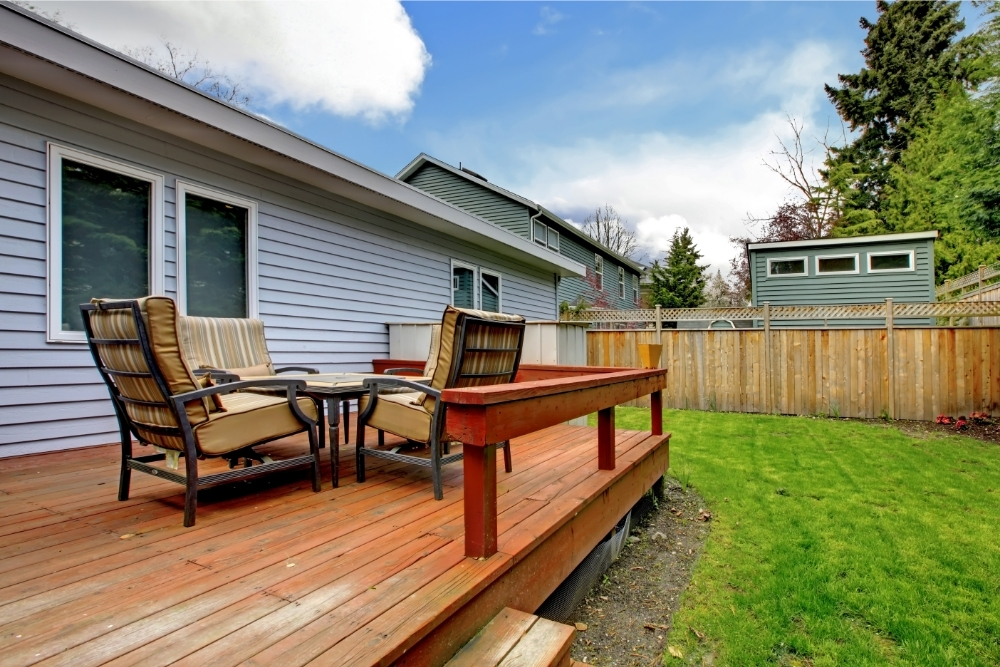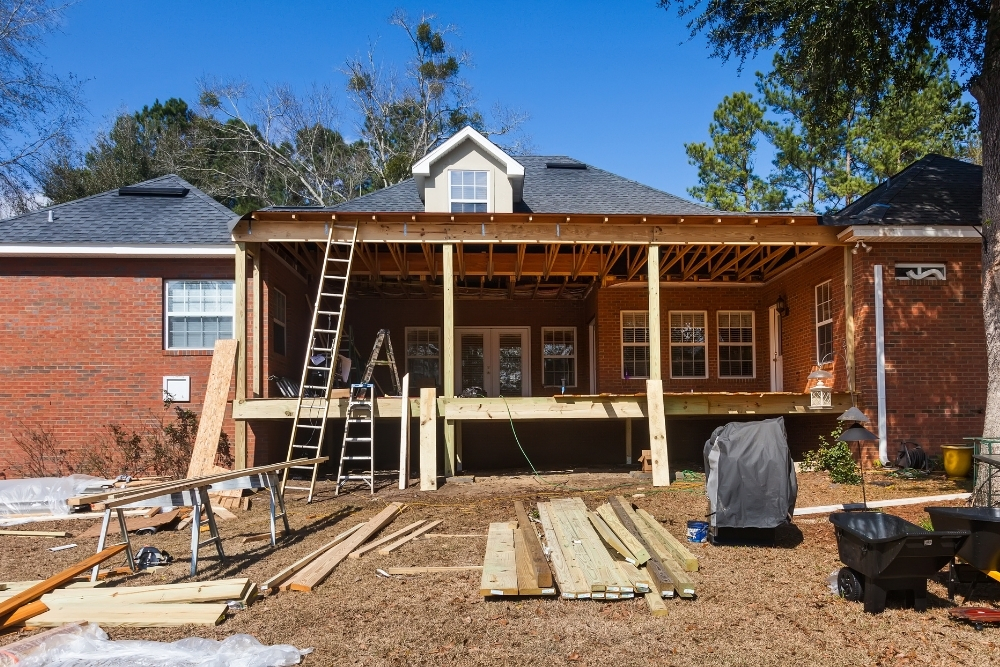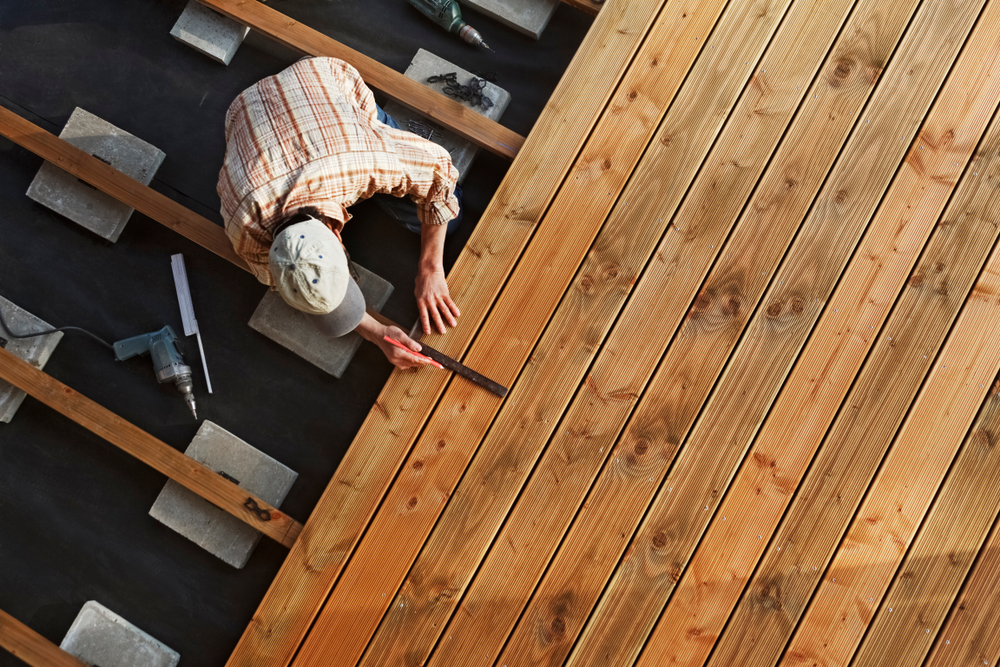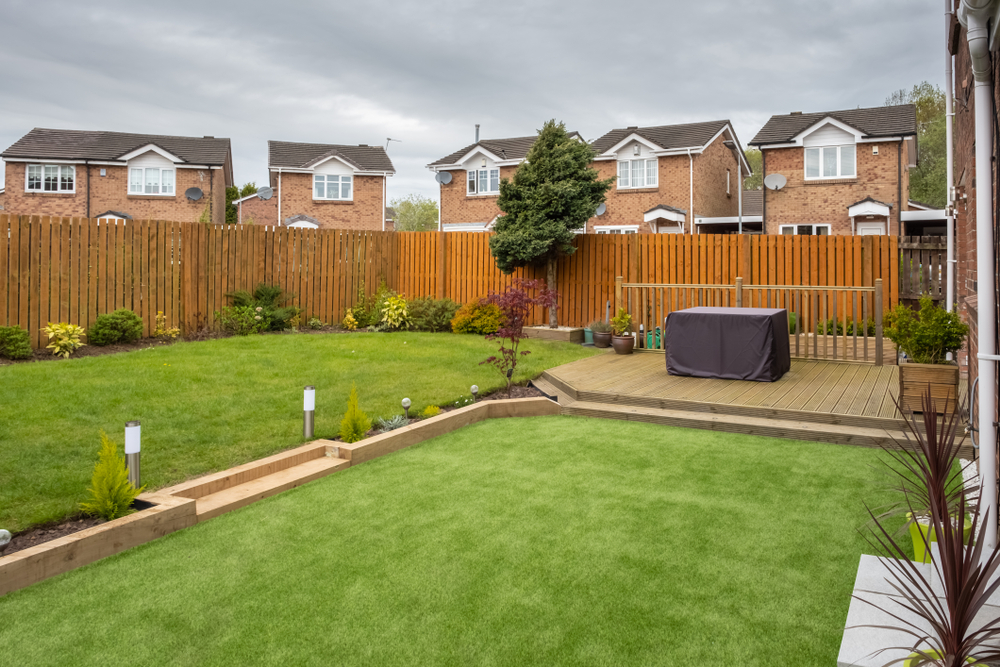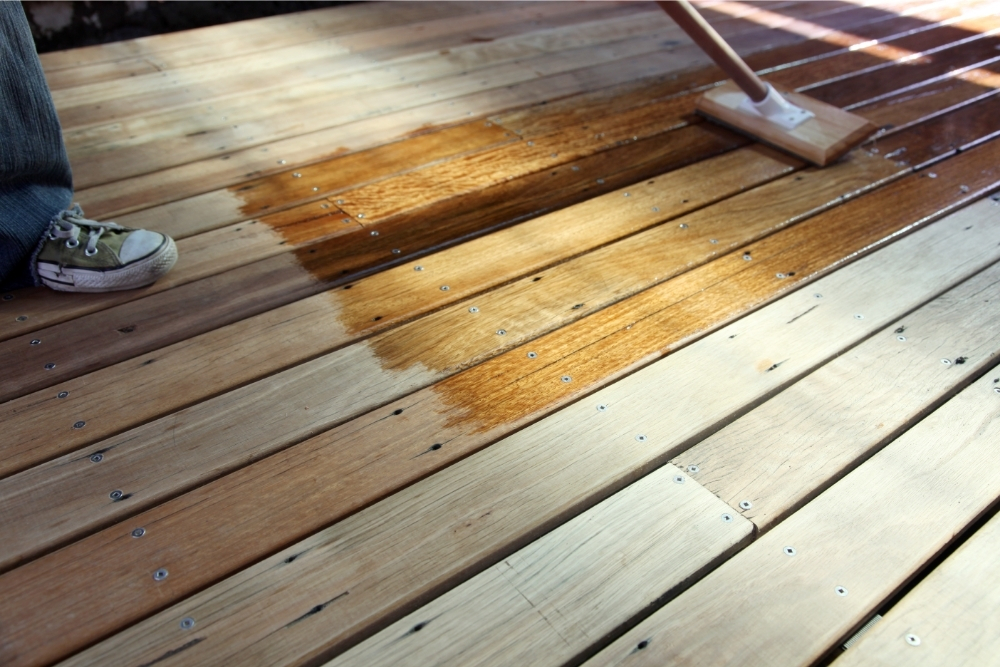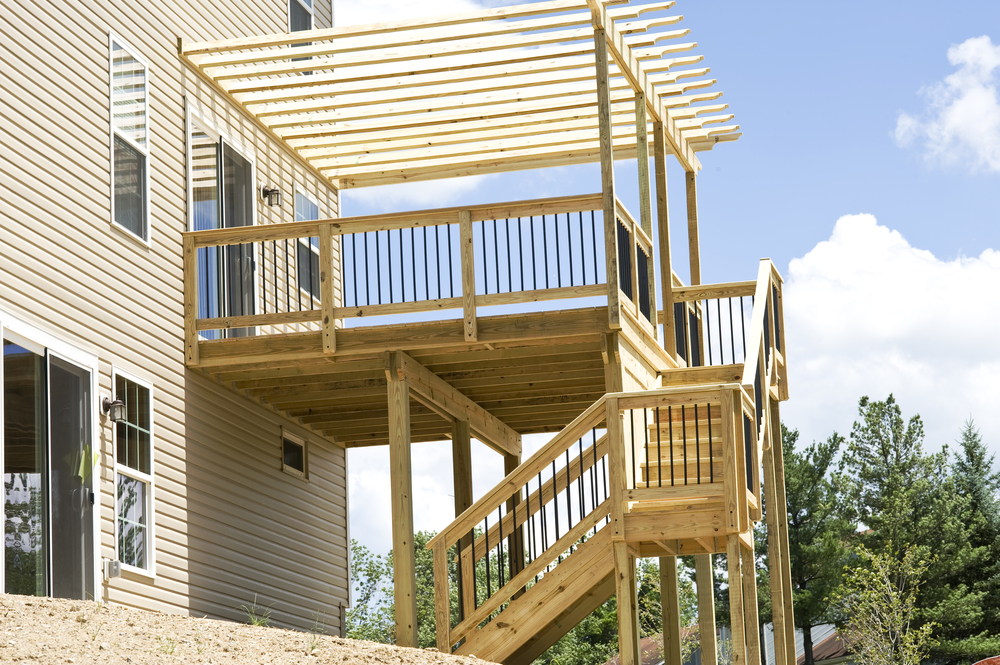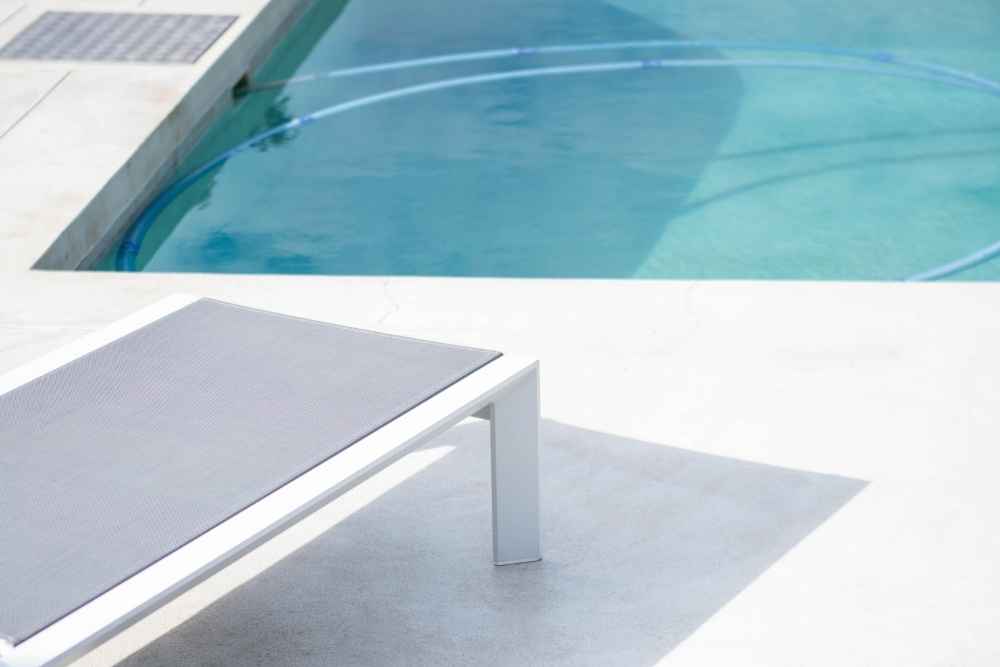A garden deck can be a wonderful addition to your space, opening up additional room for you to host parties or enjoy your garden, or even install additional features from jacuzzi’s to fire pits. They are often the ultimate space for summer hosting, however, they need to be built well in order to be safe and to be able to handle the weight of you, your guests, and any additional features you want to install.
This can mean that there’s a lot of variance between the exact thickness of the boards, panels, and joists you use for your decking, however, there are definitely some key things to keep in mind to ensure your deck is safe and lasts for a long time.
In this article, we’re going to look at how thick your plywood joists should be for an outdoor deck, and what fastenings are commonly used for this type of decking to make sure it’s secure and durable.
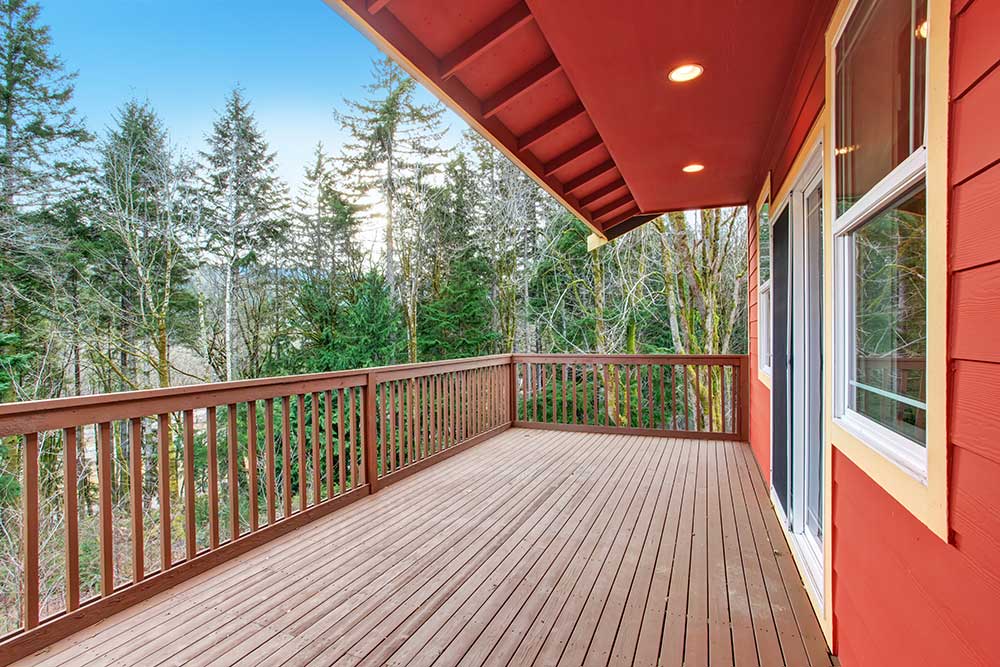
First things first…
If you’re someone who already has good experience with construction or DIY, feel free to skip this section, as we’re going to quickly touch on some of the basics to make sure beginners are able to understand what we’re referring to.
The first and most important element of your decking is the joist. It’s the bone structure of your deck and is integral to making sure it’s capable of being used as intended. They are usually placed vertically below the decking and are what give the decking the strength it needs to withstand heavy use and various large, often weighty objects from tables and chairs to barbeques and other garden accessories.
The most common choice for joists is 2 x 8’s or 2 x 10’s, which are set upright at various intervals depending on the budget and the desired strength of the decking.
The fastenings used and the joins can vary depending on the desired look and integrity of the decking, but often there will be a very secure bearing point at each intersection of the frame and the joist.
Decking Thickness
The thickness of the top decking is critical for quality decking, and if properly supported it should feel very solid and secure.
There are many different types of decking thicknesses that can make finding the right one for you quite challenging, especially because there are what’s known as nominal thicknesses and actual thicknesses which can further complicate matters.
The most common thickness for decking boards in the US is a 5/4 thickness, which is an actual 1” thick board and capable of withstanding typical demands such as simply sitting or standing on the decking and accommodating light furniture and plant pots.
There are other thicknesses, however, such as;
- Four quarter or 4/4 boards – with an actual thickness of ¾” to 13/16”. The three quarter inch board is a little lighter and less durable, which is why some brands use a 13/16” version of this board to provide a little more rigidity and strength.
- Five Quarter or 5/4 boards – These are the standard 1” boards that are most common in the US, and are quite solid, especially when paired with good joist spacing, and are generally considered the bare minimum for long term decking solutions.
- Eight Quarter or 8/4 boards – These are one of the thickest boards available and are one of the strongest, providing excellent rigidity and strength, and minimal flex or movement. They are capable of spanning larger joist spaces and are often used on things like boardwalks, due to their durability and reliability.
What thickness do I need?
There are a few things to consider when determining what thickness you should use for your decking.
The first thing to consider is the joist spacing you’re going for. If your deck is using relatively close spacing and is for a fairly small space, the standard deck thickness of 1” should be perfect and is a great compromise of strength, durability, and longevity against the most costly and heavier eight quarter boards.
The next thing to consider is how you intend to use your decking. If you know that you’re going to be using it heavily and putting it under a lot of duress, a thicker board or closer joist spacing will be a way for you to enjoy your decking how you want to without fear of breaking it or damaging it.
If your decking is only going to be for very light use, the thinner board could be a great option to save you money and make it far easier to install too!
The best thing to do is have a clear plan for how you want to use the decking, and pair up your choice of plywood thickness with an appropriately spaced frame and joist setup to maximize whatever thickness you decide to go for.
A word on fastenings
In terms of fastenings for plywood decking, the worst thing you can do is use common nails. These should be avoided as they risk splitting the wood and aren’t particularly strong when paired with a composite wood like plywood.
Screws are a far better choice for plywood as they don’t need to use compression to stay fixed in place. The threads of the screw are what bind it to the wood and hold it in place, and they create their channels more precisely reducing the risk of splitting the wood.
Just make sure to take care at the end of the grain as screws can sometimes fail to bind correctly in these areas, and to counter this a good cross-grain plywood should be used to avoid issues with splintering and breakage.
Some of the best type of screws (on Amazon) to use are;
- Bugle head screws
- Trim head screws
- Standard flathead screws
- Oval head screws

